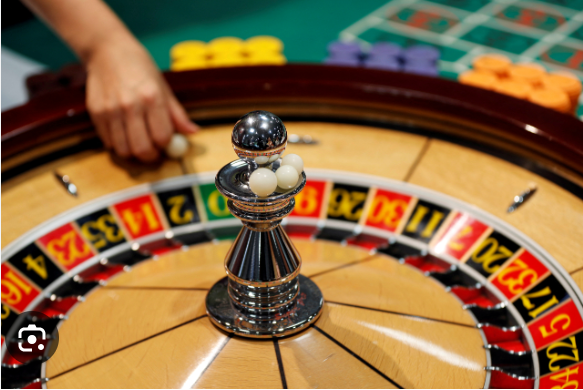Slot machines have evolved from simple mechanical devices to sophisticated digital gaming machines, captivating players with their vibrant graphics and thrilling gameplay. But have you ever wondered what goes on behind the scenes when you pull that lever or press that button? In this article, slot we’ll delve into the mechanics of a spin and explore how slots work under the hood, revealing the technology and algorithms that make these games tick.
1. The Basics of Slot Machines
Components of a Slot Machine
At the core of every slot machine, whether mechanical or digital, are a few key components:
- Reels: Traditionally, slots feature three to five reels that spin when activated. Each reel is adorned with various symbols that determine the potential payouts.
- Symbols: These are the images displayed on the reels, including classic icons like fruits, bars, and numbers, as well as themed images in modern slots.
- Paylines: These are the lines that determine winning combinations. A player wins when matching symbols align along these paylines.
Types of Slots
- Mechanical Slots: The earliest slots operated using physical reels and mechanical components, relying on springs and gears.
- Video Slots: Modern slots are predominantly digital, utilizing video screens to display animated reels and advanced graphics.
- Progressive Slots: These games are linked across multiple machines or casinos, with a portion of each bet contributing to a growing jackpot.
2. The Random Number Generator (RNG)
The Heart of Modern Slots
At the heart of every digital slot machine is a Random Number Generator (RNG). This algorithm is crucial for ensuring fair play and randomness in the game.
- How It Works: The RNG generates thousands of random numbers per second, even when the machine is not being played. When a player activates the machine, the RNG selects a number that corresponds to a specific combination of symbols on the reels.
- Fairness and Regulation: Because the RNG operates independently, it ensures that each spin is random and unpredictable. Gaming authorities regularly test and certify RNGs to maintain fairness in the industry.
3. The Spin Process
Activating the Spin
When you press the “Spin” button or pull the lever, several processes occur in rapid succession:
- Random Number Generation: The RNG generates a random number, which determines the outcome of the spin.
- Reel Simulation: The computer simulates the spinning motion of the reels, displaying a series of images in quick succession to create an engaging experience.
- Stopping the Reels: Once the reels stop, the RNG’s chosen number determines the symbols that appear on the screen.
Determining Wins
- Winning Combinations: After the reels come to a halt, the game checks the resulting symbols against the predetermined paylines to see if any winning combinations have been formed.
- Payout Calculation: If a player wins, the machine calculates the payout based on the game’s paytable, which specifies the prize associated with each winning combination.
4. The Role of Return to Player (RTP)
Understanding RTP
Return to Player (RTP) is a critical concept in slot gaming, representing the percentage of total wagers that a slot machine is programmed to return to players over time.
- Typical RTP Values: Most slots have RTP values ranging from 85% to 98%. A higher RTP indicates a better return over the long run, although individual sessions can still vary widely.
- Impact on Player Strategy: Understanding RTP can help players make informed choices about which slots to play. While it doesn’t guarantee wins, it provides insight into the machine’s potential payout behavior.
5. Bonus Features and Mechanics
Enhancing the Gameplay
Modern slots often come equipped with various bonus features that enhance the gaming experience and offer additional winning opportunities.
- Wild Symbols: These symbols can substitute for others to create winning combinations, increasing the chances of a payout.
- Scatter Symbols: Typically, landing a certain number of scatter symbols can trigger bonus rounds or free spins, providing players with extra chances to win.
- Bonus Games: Many slots include interactive bonus rounds, where players can engage in mini-games that offer additional rewards.
6. The Importance of Game Design
Visual and Auditory Appeal
The design of a slot machine plays a crucial role in attracting players. Bright colors, engaging animations, and captivating sound effects create an immersive environment that enhances the gaming experience.
- Theme Integration: Modern slots often feature themes ranging from mythology to pop culture, creating a connection that resonates with players and keeps them engaged.
- User Experience: Intuitive interfaces and smooth gameplay are essential for keeping players interested and invested in the game.
Conclusion: The Intricate World of Slots
The mechanics behind slot machines are a fascinating blend of technology, mathematics, and design. From the random number generators that ensure fair play to the engaging themes and bonus features that captivate players, every element works in harmony to create an exciting gaming experience.
Understanding how slots function under the hood not only enhances appreciation for the game but also helps players make informed choices as they spin the reels. Whether you’re a seasoned player or a curious newcomer, the intricate world of slots offers endless possibilities and thrills waiting to be explored.
